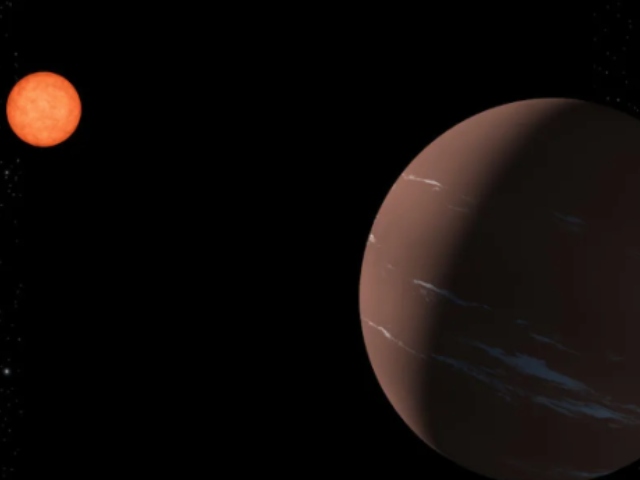[imagesource: NASA/JPL-Caltech]
The above is an illustration of Exoplanet TOI-715 b, a super-Earth in the habitable zone of a red dwarf star about 137 light-years away.
First found in 2023, the exoplanet has a mass of 3.02 Earths and it takes 19.3 days to complete one orbit of its star.
Researchers suspect that within the same star system, there could be another planet almost the size of Earth. Dubbed TIC 271971130.02 for now, if confirmed, it would mark the smallest habitable-zone planet pinpointed by NASA’s Transiting Exoplanet Survey Satellite (TESS).
The habitable zone is the area around a star in which temperatures are just right for an exoplanet to sustain liquid water on its surface. NASA announced this big-deal discovery on January 31 but I suppose other news swamped it:
“Within the most conservative estimate that you can make of the habitable zone and within all of the uncertainties that you have about the star and the planet itself and everything, this planet [TOI-715 b] is for sure in the habitable zone,” says Amaury Triaud, a study co-author and professor of exoplanetology at the University of Birmingham in the U.K.
One crucial aspect researchers are focusing on is the size of these exoplanets. Triaud, along with Georgina Dransfield, the lead author of the study, found it surprising that TOI-715 b not only falls within the habitable zone but also possibly consists of rocky terrain. That’s because to be rocky, super-Earths — which have masses between about two to 10 times Earth’s and diameters between our planet’s and Neptune’s — need to hit a sweet spot where they are not too big but not too small.
“If they’re too big, we think that they’re no longer rocky, and they turn into something that looks more like Neptune or Jupiter, which are completely gas and have no solid surface,” says Sarah Moran, who studies exoplanet atmospheres at the University of Arizona, and was not involved with the study.
Therefore, both the mass and diameter of a planet are crucial in determining its potential similarity to Earth and its ability to harbour Earth-like life. A low mass and large radius often indicate a mini-Neptune with a gassy atmosphere, while a higher mass coupled with a smaller radius suggests a rocky composition akin to our own planet.
The prospect that TOI-715 b might be rocky is a thrilling prospect, as Moran notes, “because that supports it being more of a habitable planet versus some sort of other world.”
To ascertain its true nature, Triaud and his team are diligently working to confirm the planet’s mass, which will shed light on whether TOI-715 b is a potentially watery, terrestrial world.
If it is, Elon Musk will probably have to give up Mars and plot a new future trajectory.
[source:astronomy]





